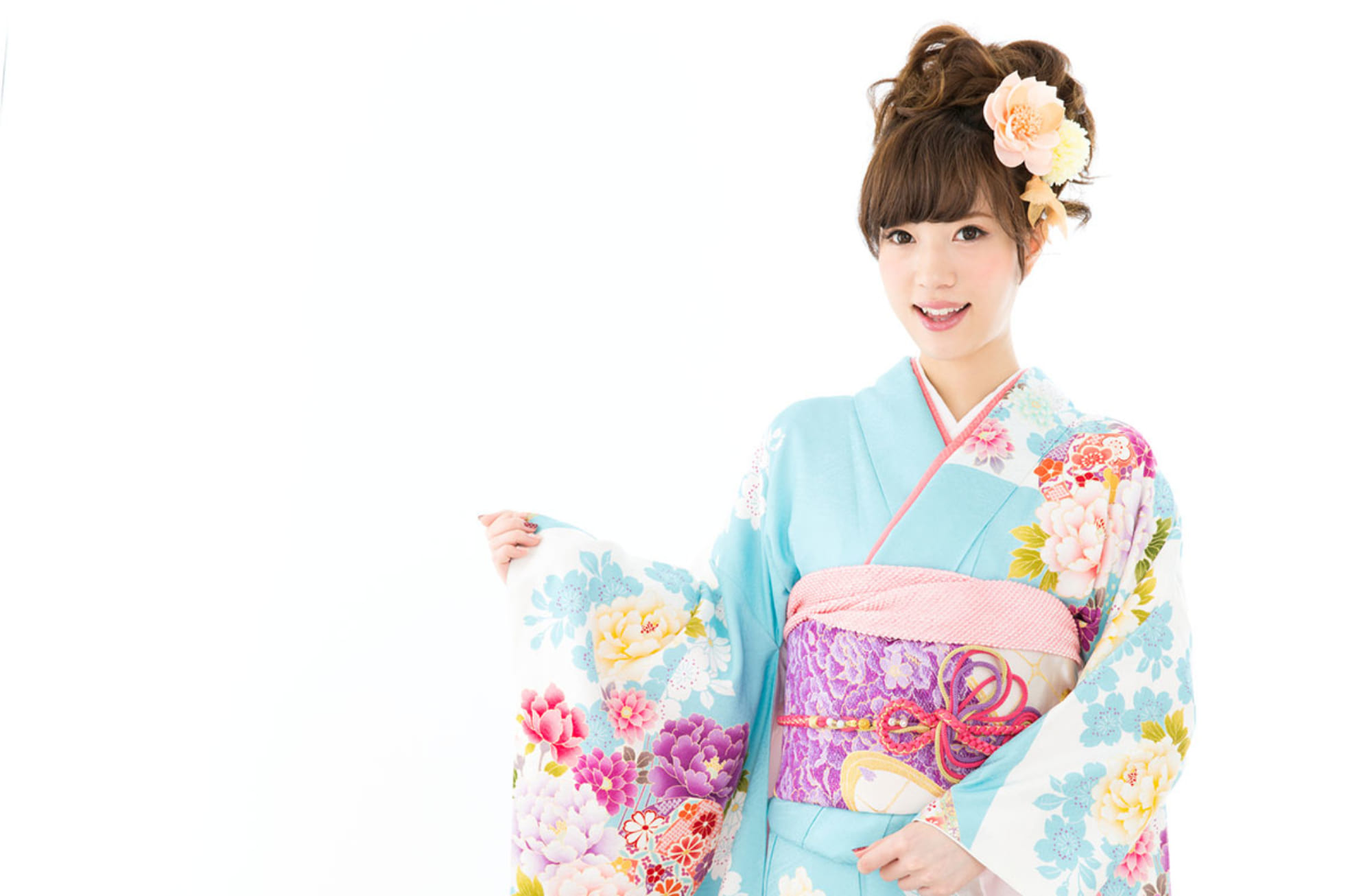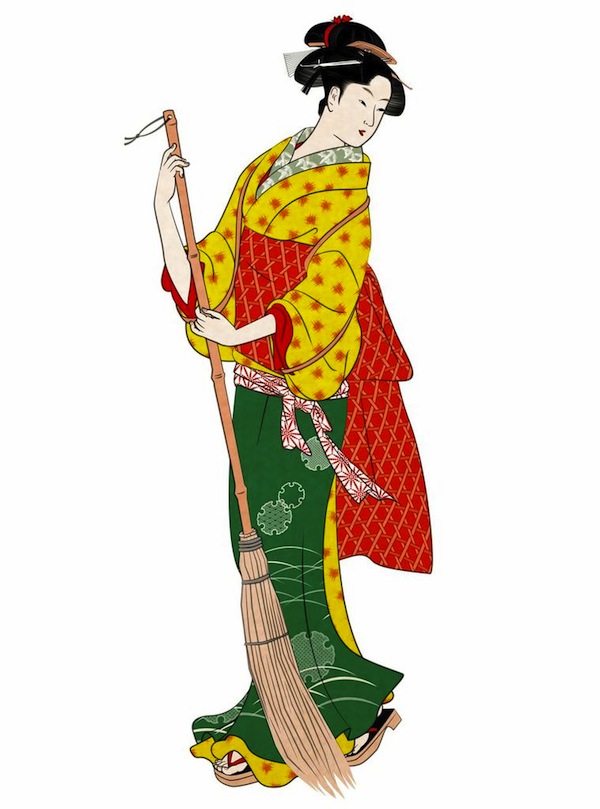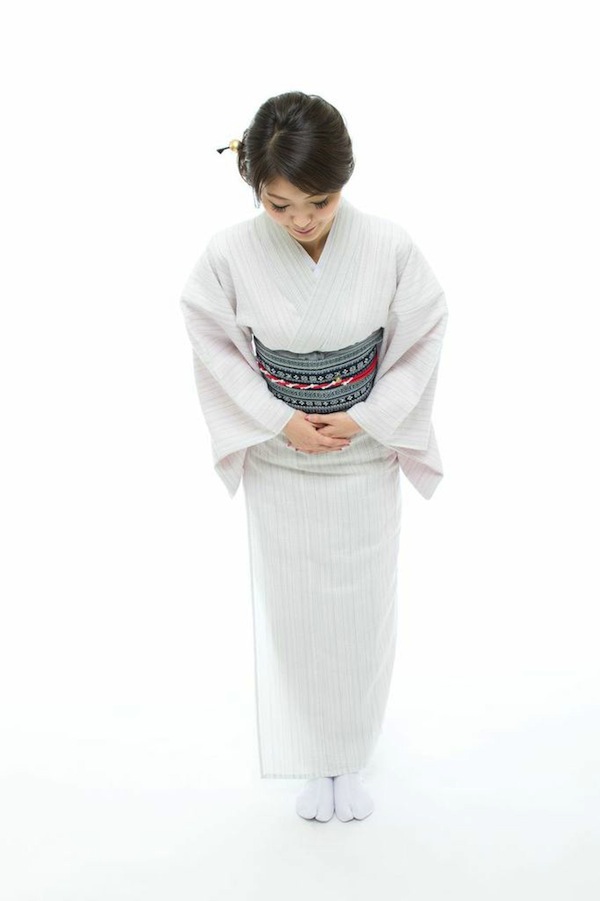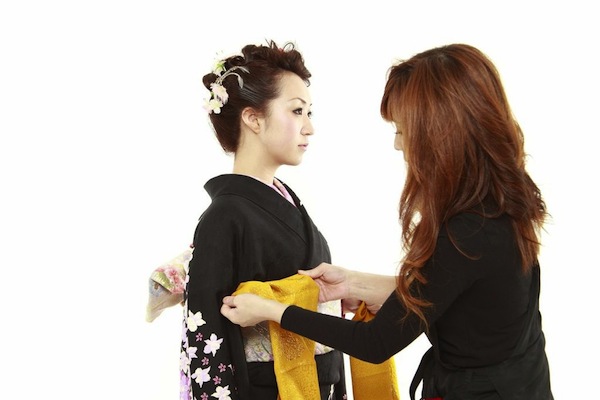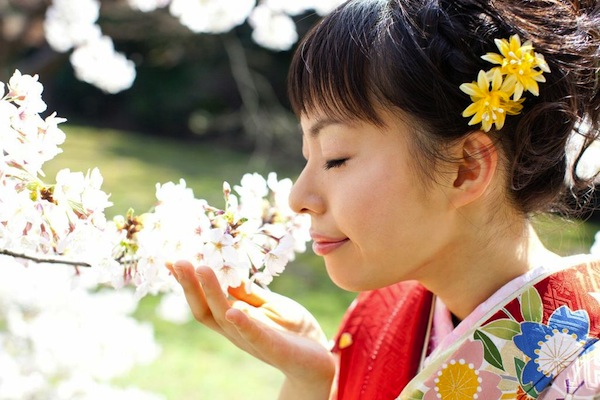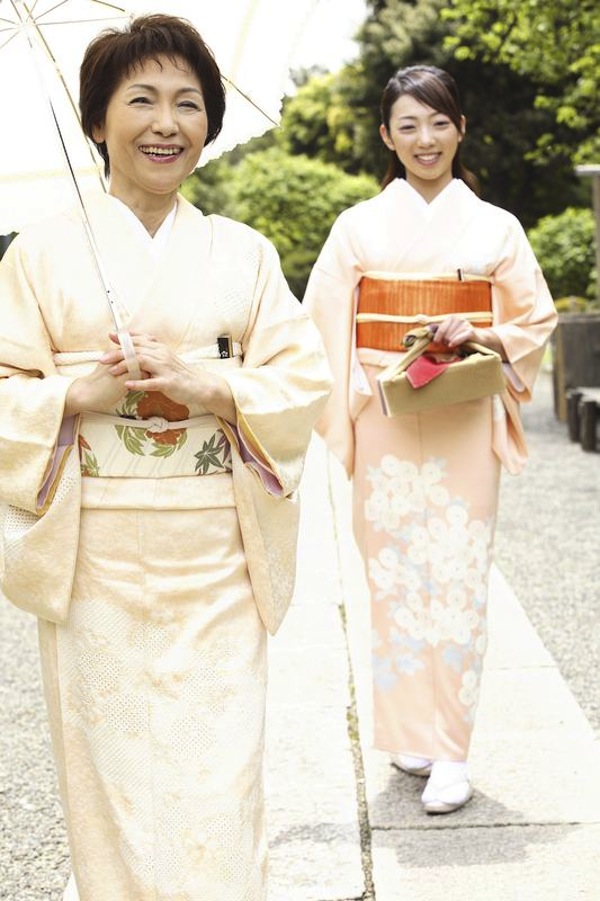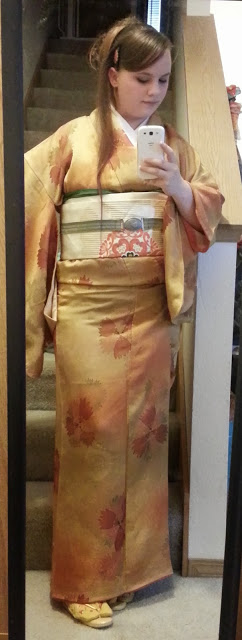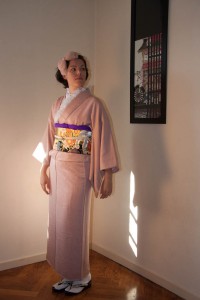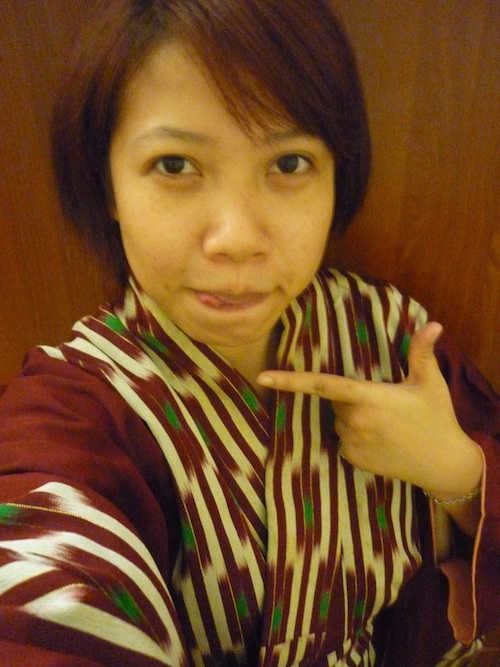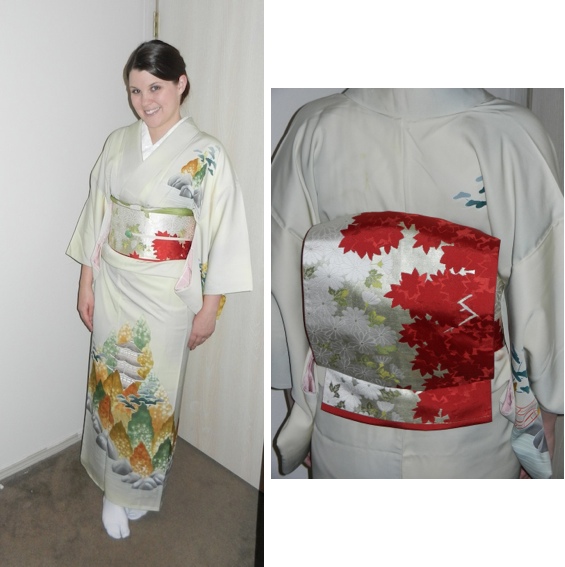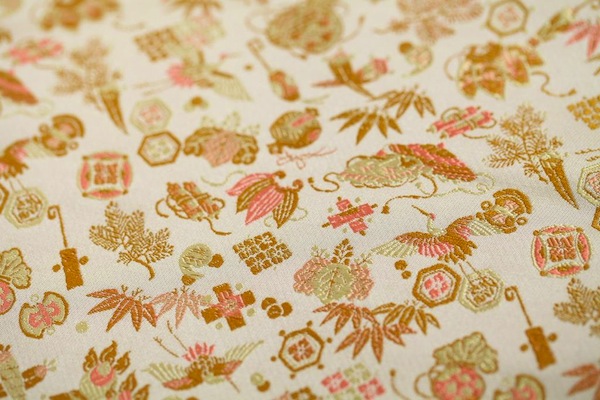
Sakizome
Sakizome is to dye a yarn before the weaving process and the product itself using such yarn are also called so.
The sakizome kimono is called “woven kimono” and the sakizome obi is called “woven obi”. In contrast to this, atozome is to dye a fabric woven by a white yarn.While sakizome allows to dye into the core and retain the color from losing and fading, the color can’t be changed by dyeing later or a pattern cannot be added later. The texture of the original yarn may change since the process for dyeing will be added to the raw yarn. Tsumugi is a typical sakizome product which has different individuality based on the production regions.
The most simple sakizome product is without a pattern but there is not that much product without any pattern.
As for kimono, stripe pattern and lattice pattern are woven using several colored yarn in general. Kasuri method is used for more elaborate product. As for obi, a more elaborate pattern will be woven. There are Hakata-ori and Nishijin-ori for typical sakizome obi.
